WW2: Luminous Buttons
The effects of war were not all of a restrictive nature; some changes were of a positive, adaptive nature. According to https://www.iwm.org.uk/history/how-clothes-rationing-affected-fashion-in-the-second-world-war blackouts in England even before the declaration of war, in fear of German bombing, had caused foreseeable hazards at night. This prompted a safety campaign urging the wearing of white clothing at night to aid visability. Another trend was the adopting of luminescent accessories. These had been reported as a fashion novelty as earlier as 1932 as a spray on phosphorous hair powder, to make women’s hair glow in the dark! Blackouts would have encouraged a return to this novelty.
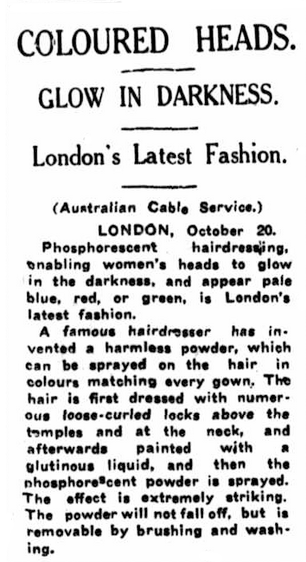
Queensland Times (Ipswich, Qld), 22nd October 1932 page 6.
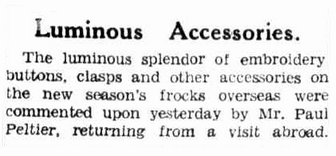

The Age (Melbourne), 18th January 1938 page 3.
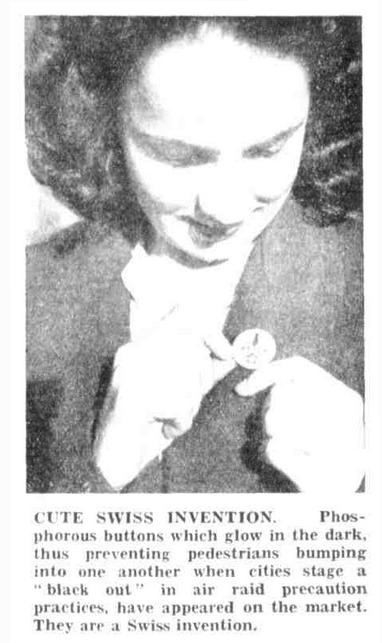
Chronicle (Adelaide), 27th October 1938 page 33.

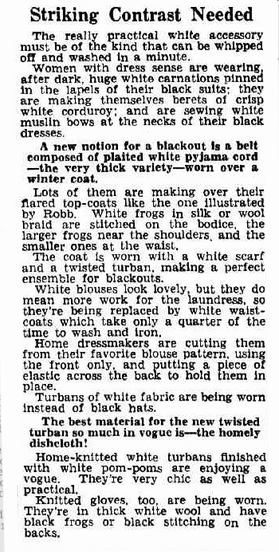
Daily Telegraph women’s magazine (Sydney), 23rd November 1939 page 17. The sketch shows ” a black ensemble with highlights in white for a blackout. White frogson the military coat, white scarf, gloves, and turban make the wearer easy to the eye in more ways than one.”
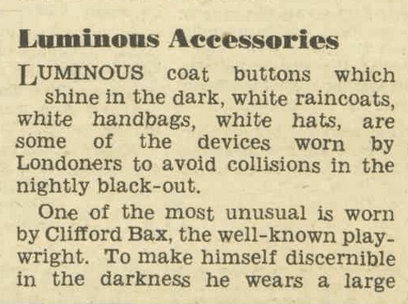

The Women’s Weekly, 30th December 1939, page 18. A topi is a type of rimless cap, such as worn in countries of South Asia such as Pakistan and India.
For any comment or query, please use the Contact page.
